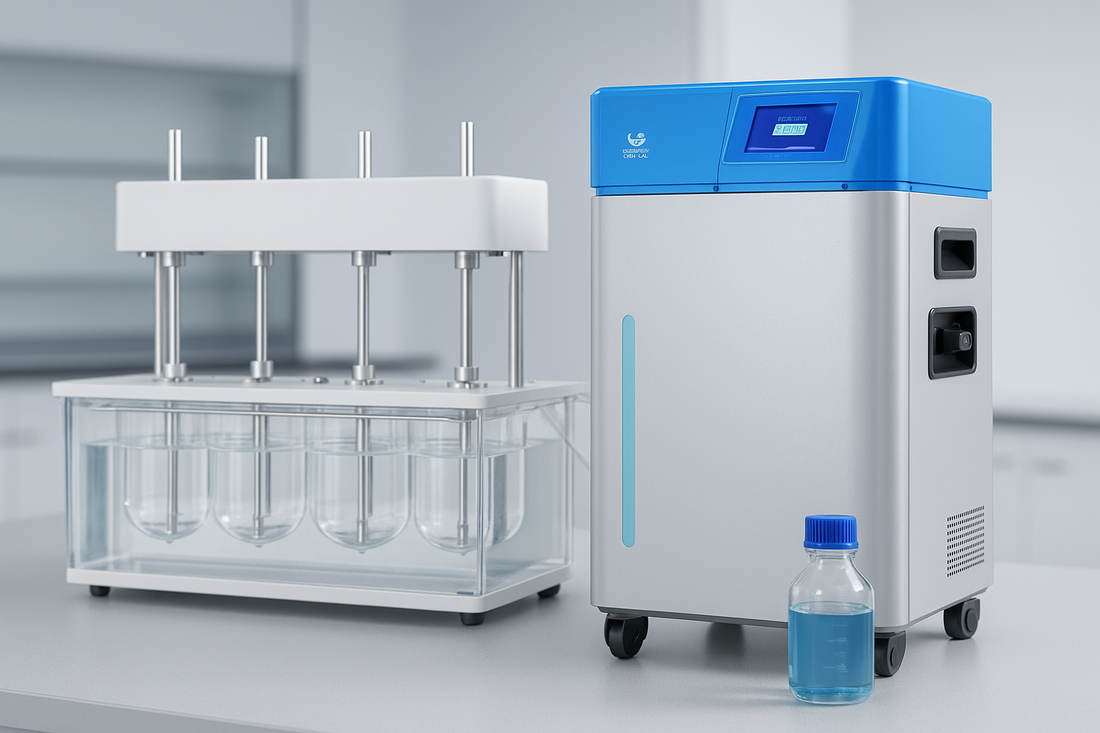
Why Degassing Is Essential Before Dissolution Testing — The Role of Vacuum Degassers
Share
Summary: Gas bubbles in dissolution media can distort hydrodynamics, cling to dosage forms or paddles, and destabilize the curve—hurting repeatability. A purpose-built vacuum degasser makes media prep faster, more consistent, and easier to defend during audits.
Introduction
In dissolution testing, media preparation is often underestimated. In reality, dissolved air and microbubbles can drive variability, causing poor repeatability across runs. A vacuum degasser is designed to remove dissolved gases efficiently so your curves remain stable and comparable.
Why degassing matters
- Standards alignment: Major pharmacopeias call for controlled media preparation to ensure comparable results across labs and batches.
- Bubble interference: Bubbles can adhere to tablet surfaces or paddles/baskets, altering flow and apparent release rates.
- Better repeatability: With stable, bubble-free media, replicate runs show tighter %RSD and cleaner profiles.
Common industry pain points
- Manual methods lack consistency: Traditional sonication or boiling-and-cooling are operator-dependent and time-consuming.
- Throughput bottlenecks: Preparing multiple vessels can tie up staff and instrumentation.
- Regulatory risk: If media prep doesn’t meet documented expectations, submissions face questions or delays.
HUANGHAI’s solution: HTQ-1A Vacuum Degasser
The HTQ-1A Vacuum Degasser is engineered specifically for dissolution media.
- Vacuum-driven degassing: Rapidly removes dissolved gases to minimize bubble formation at test start.
- High efficiency & repeatability: Delivers consistent results across batches and operators.
- Optimized for dissolution workflows: Prepares media that yields smoother, more stable release curves.
Manual vs. vacuum degassing (at a glance)
| Aspect | Manual (boil/sonicate) | HTQ-1A Vacuum Degasser |
|---|---|---|
| Consistency | Operator-dependent; varies by batch | Process-driven; reproducible |
| Time | Often lengthy (heat/cool cycles) | Fast media turnover |
| Thermal impact | May alter media temperature/composition | Controlled process with minimal thermal stress |
| Audit readiness | Harder to document uniformly | Clear parameters and records |
Compliance & value
- Supports pharmacopeial expectations: Establishes a defendable, documented media-prep step.
- Improves data reliability: Reduces curve noise and run-to-run variability.
- Lowers hidden costs: Fewer repeats, smoother validation, stronger submissions.
Recommended equipment
- HTQ-1A Vacuum Degasser — purpose-built for dissolution media prep
FAQs
Q: Do I still need to control media temperature?
Yes. Degassing should be paired with proper temperature control to maintain media specifications before and during the test.
Q: Can sonication replace vacuum degassing?
Sonication can help, but results are often operator- and setup-dependent. Vacuum degassing provides faster, more uniform outcomes with clearer documentation.
Key takeaway
Dissolution is a registration-critical assay. By integrating the HTQ-1A Vacuum Degasser into media prep, labs can avoid bubble interference, stabilize release curves, and improve the repeatability and auditability of their data.
